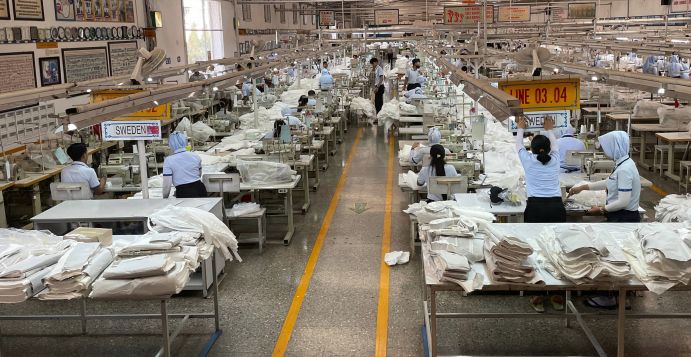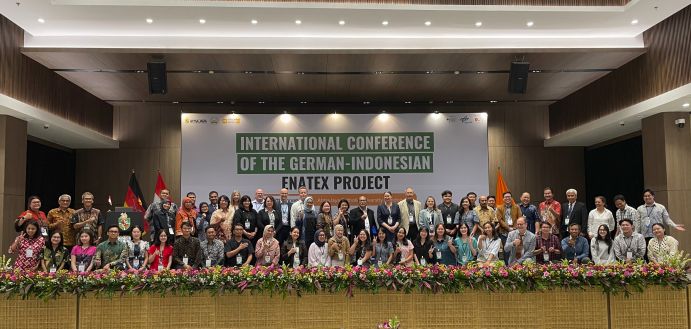Improving climate protection by saving energy in the Indonesian textile industry
The BMBF project EnaTex developed new solutions to make the textile industry in Indonesia more climate-friendly. With success: up to 40 per cent of the energy consumption can be saved through measures in pre-treatment, dyeing and finishing.

The textile industry in Indonesia has grown steadily in recent years and is an important export factor for the country. In addition to further growth, Indonesia is pursuing the goal of significantly increasing energy efficiency in its production by 2030, establishing ecologically, socially and economically sustainable textile production and reducing greenhouse gas emissions in this sector.
But how can the transformation towards climate-friendly and sustainable production succeed? In the EnaTex project, funded by the German Federal Ministry of Education and Research (BMBF), German partners together with Indonesian partners developed new solutions for plant technology and optimised processes. The partners presented their results to representatives from politics, the textile and energy industries and science at the final conference in Jakarta, Indonesia, on 11-12 February 2025.
Less energy consumption, more climate protection: energy savings of up to 40 per cent
The team was able to present positive results, particularly in the EnaTex project's focus on how energy efficiency can be increased and savings realised: In future, up to 40 per cent of the energy consumption can be saved through various measures in the three areas of textile pre-treatment, dyeing and finishing alone. In its research, the project focussed on two innovative technologies in textile finishing: the so-called minimum application and the ultrasonic process.
The minimum application is a technique, that involves applying only the minimum amount of dyeing or finishing products, such as for water-repellent or crease-resistant effects, to the textiles. With this technology, the chemicals are applied - where possible - only to one side and with as little liquid as possible. This minimises the subsequent drying process, for example, and thus reduces the amount of energy required for drying. The use of this process therefore makes a significant contribution to increasing efficiency.
The second new technology investigated by the project, the ultrasonic process, can be used to clean, dye or finish fabrics using ultrasound. For example, the entire washing process can be significantly shortened by bleaching or colouring cotton or viscose in the post-wash stage. As a result, large quantities of fresh and waste water can be avoided and the amount of energy used for the cleaning water can be reduced accordingly. Reducing the amount of water is particularly essential as primarily domestic lignite is currently used to heat the water. By changing to this process and thus reducing the amount of water used, CO2 emissions can be further reduced.
From theory to implementation
In addition to the project results, the final event also focussed on the discussion of how the results can be implemented in practice. The EnaTex corporate partners SriTex from Surakarta and Harapan Kurnia from Bandung are already taking various approaches into practice, for example through innovative dyes, minimum application and optimised operating methods, as well as through occupational safety measures.
The BMBF is funding the project with more than two million euros over the period from August 2021 to April 2025.




